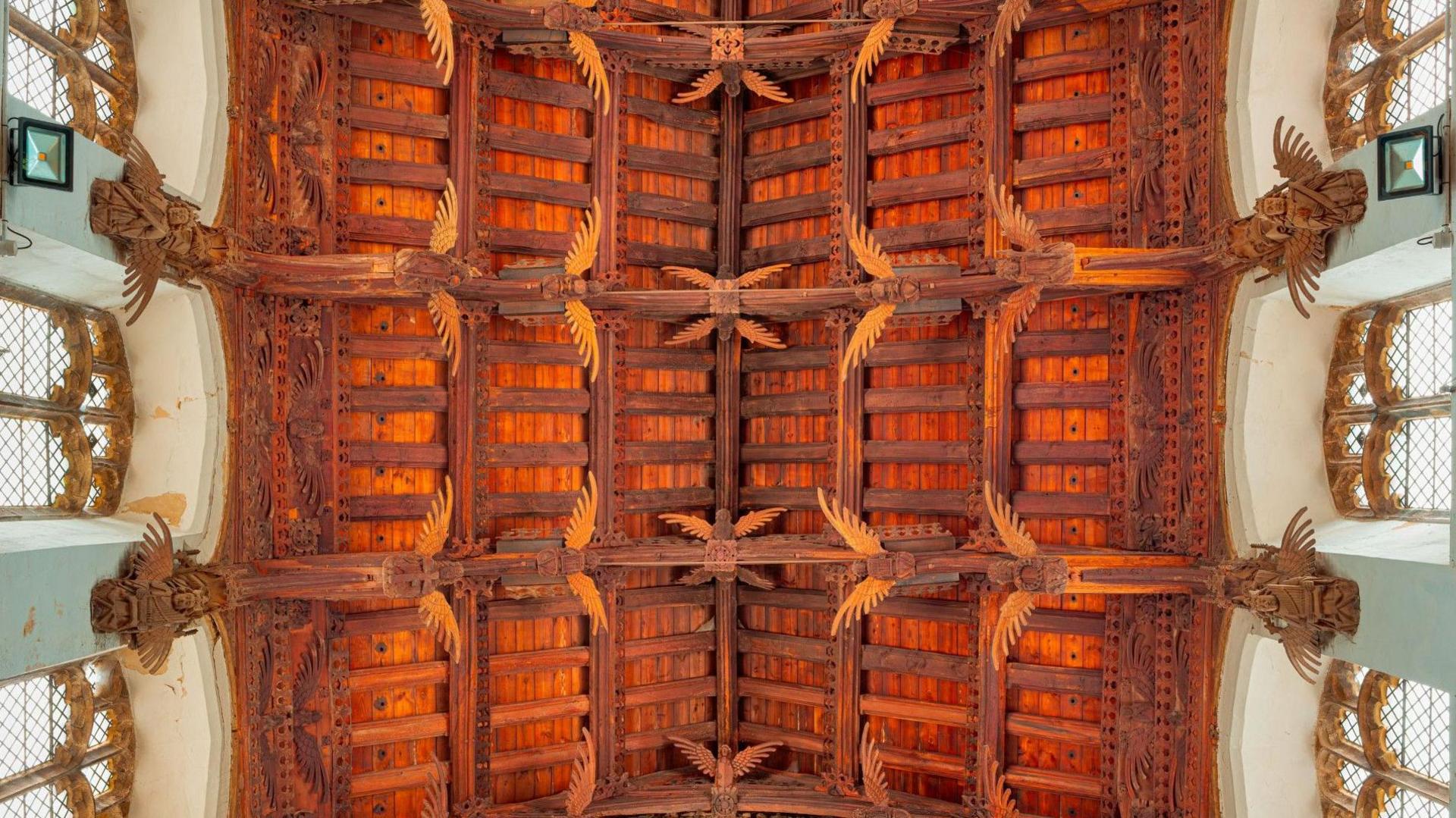The story behind a church's 'stunning' angel roof
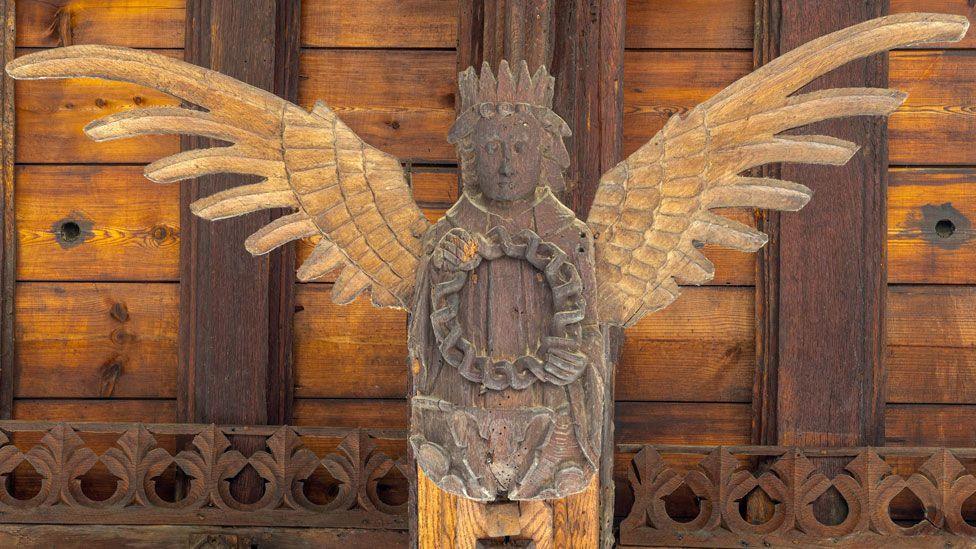
St Wendreda's 140ft (43m) spire requires about £250,000 in repairs, without which the building and its angel roof could be put on Historic England's At Risk register
- Published
"When I first saw the angel roof, I thought what a stunning and unusual array of beautiful medieval craftsmanship," said the Reverend Ruth Clay.
She is the team vicar of St Wendreda's in March, Cambridgeshire, which is one of 170 churches in England with an intricately carved wooden angel roof.
The church bells have fallen silent and the roof put into danger after it was discovered its spire needs about £250,000 in repairs.
A fundraising campaign has begun, with people asked to sponsor an angel, but what is the story of the Fenland town's soaring angel roof?
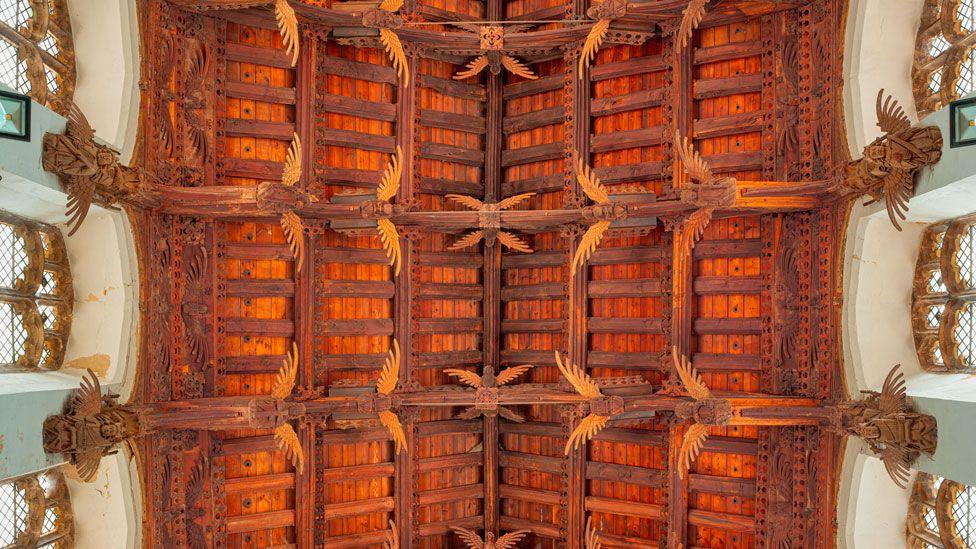
There are 118 decoratively-carved angels, all made from oak, on the double-hammer beam roof in the Grade I listed church
Work began on St Wendreda's roof in the 1520s and its patron was Sir Anthony Hansart, with funding probably coming from William Dredeman.
Mrs Clay said: "Sir Anthony was an assistant to Robert Southwell, who was one of Henry VIII's counsellors, and his first wife was Robert's sister," she said.
"The Earl of Oxford called him 'a very wise man' and it's said one of the angelic figures could be giving Sir Anthony his blessing.
"Later in life he inherited two manors, including one in March."
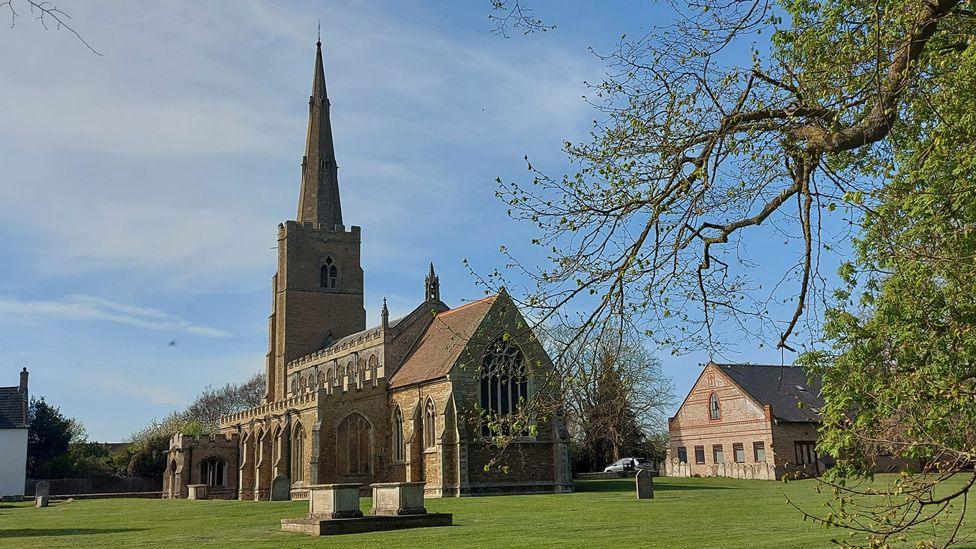
Henry VIII's right-hand man Cardinal Wolsey would have had to have given permission for the roof carvings, the vicar said
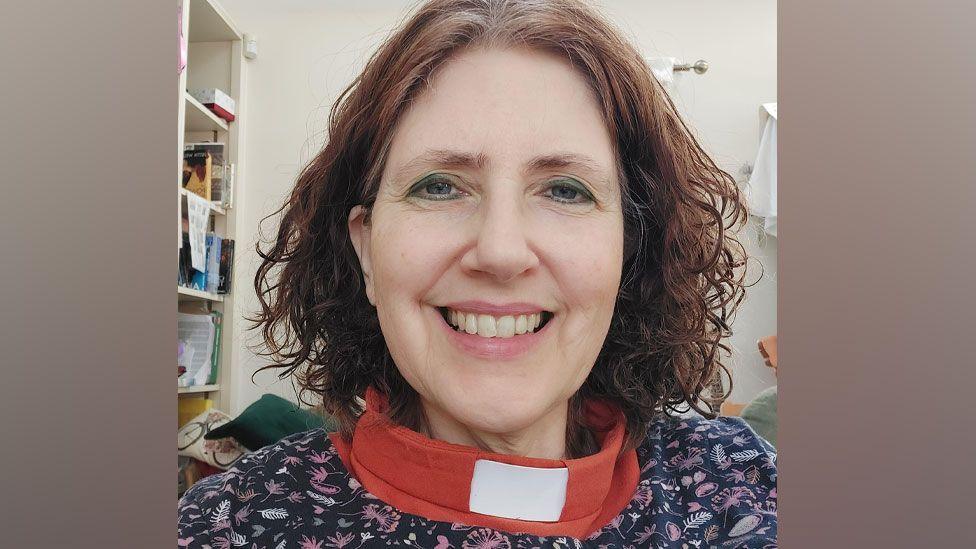
Ruth Clay said she has been surprised at how many March residents had told her they miss the sound of the church bells
There are 118 decoratively-carved angels, all made from oak, on the double-hammer beam roof.
Some hold musical instruments and others represent saints, holding the symbols of their martyrdom.
"Someone like Cardinal Wolsey would have needed to give permission for the expansion of the church and the roof installation," said Mrs Clay.
It is also decorated with 2,700 fleur-de-lis and the roof was ordered from a workshop in Bacton, Suffolk.
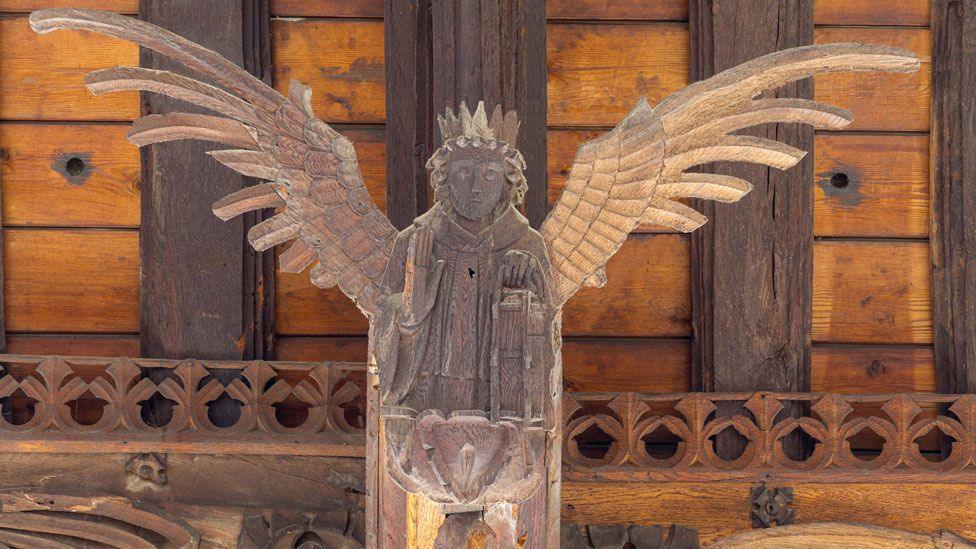
Work began on St Wendreda's angel roof in the 1520s and its patron was a man with connections to Henry VIII's court
The fashion for angel roofs began in the 1390s and continued until the Reformation in the mid-1500s.
"My research suggests the roofs appeared as a result of the royal carpenter Hugh Herland’s influence - he completed the first known angel roof in England at Westminster Hall," she said.
"Some wonder whether the angel roofs were created in opposition to the Lollard Heresy of the 1400s, which was particularly strong in East Anglia."
The Lollards were inspired by John Wycliffe (1330-1384), external, a theologian whose ideas, including translating the Bible into English, were considered heretical by the Roman Catholic church.
Mrs Clay said they rejected images in church as idolatrous and the intricately designed roofs were "a reassertion of Roman Catholic orthodoxy through art".
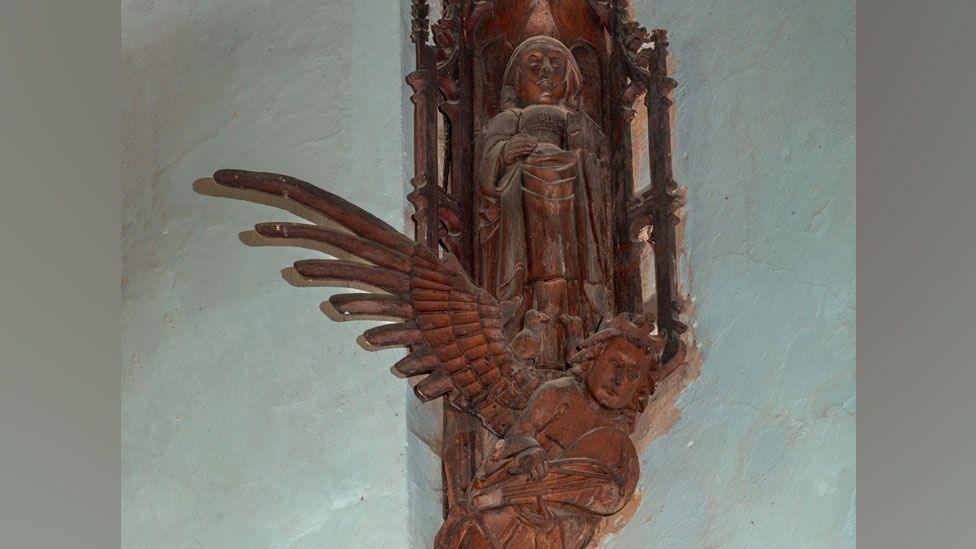
St Wendreda, who is believed to be depicted in this carving, was a 7th Century princess and the church is the only one in the UK dedicated to her
It survived the Reformation, when so many church images were destroyed.
"Of course, it's very high up, but the story is that the guildsmen of the town wined and dined King Henry's men in a hostelry next door and while they nicked the silver, they didn't set fire to the roof," said Mrs Clay.
She hoped publicity about the costly repairs required to make St Wendreda's spire safe - and start the church bells ringing again - would inspire more visitors.
"March is known for the prison [high security HMP Whitemoor], for veg-packing companies, we grow beetroot and sugarbeet, but our spectacular angel roof isn't well-known and we want to encourage people to come and see it," she said.
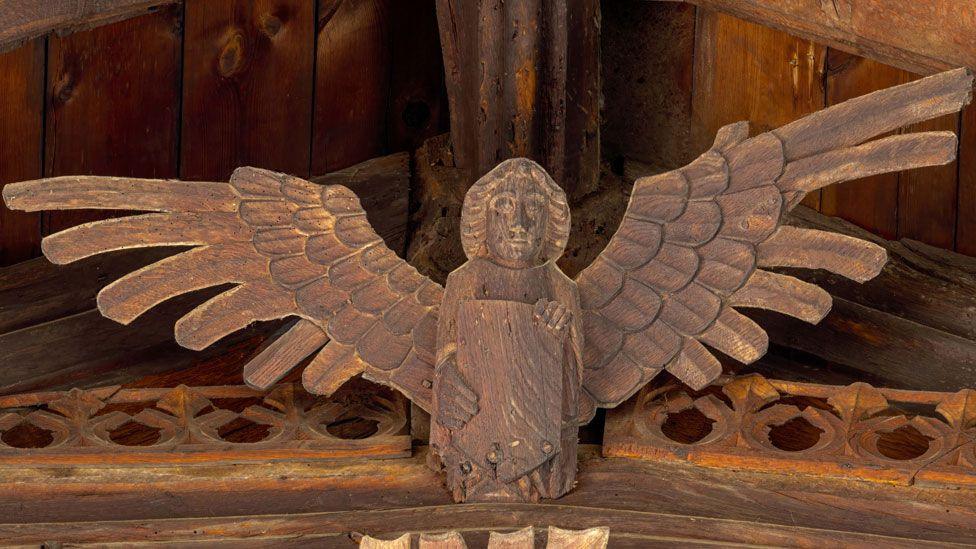
Fundraising includes asking people to sponsor their favourite angel or figure, with all funds raised towards the spire appeal, said Mrs Clay
Get in touch
Do you have a story suggestion for Cambridgeshire?
Follow Cambridgeshire news on BBC Sounds, Facebook, external, Instagram, external and X, external.
Related topics
- Published10 November 2024
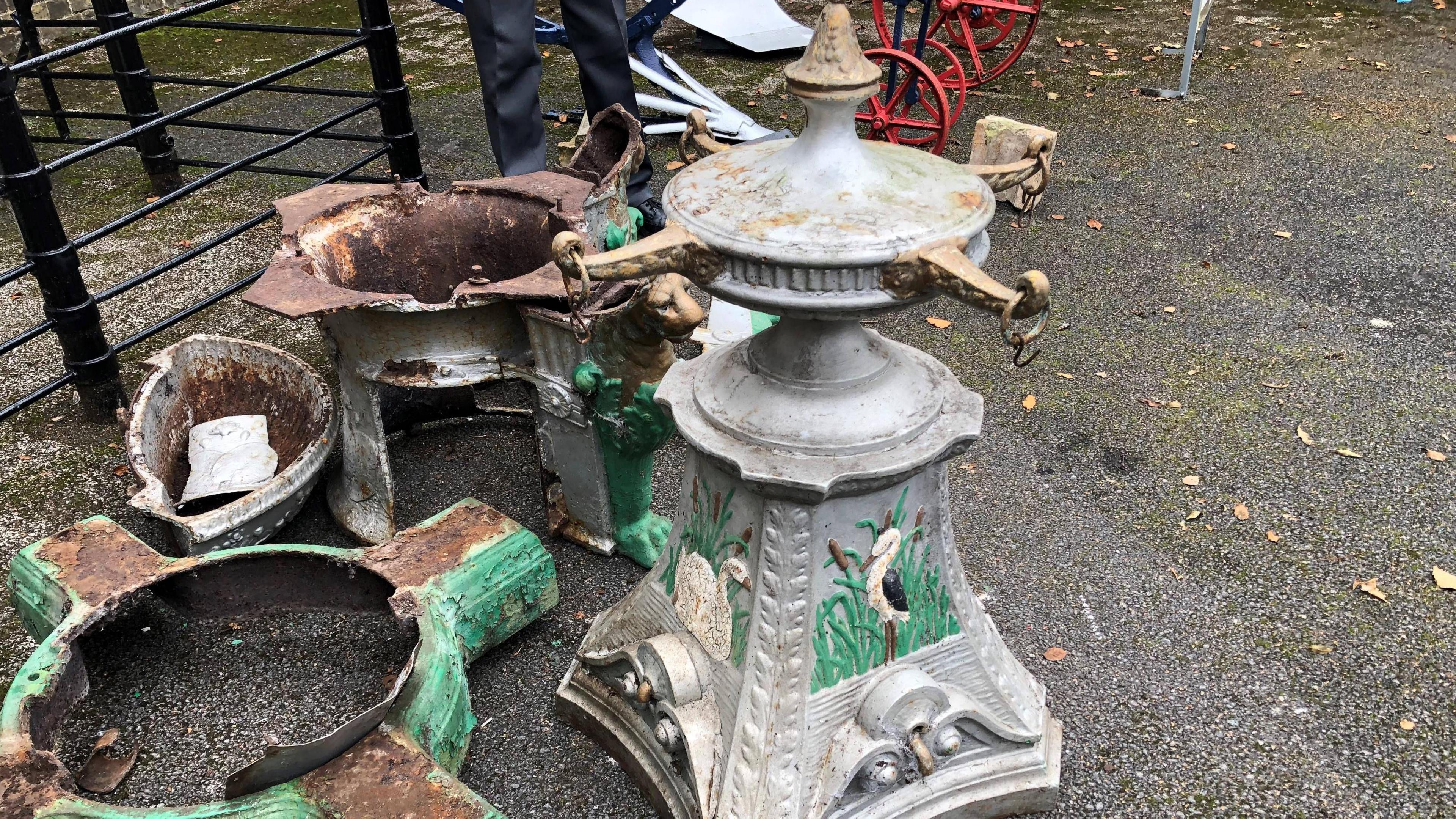
- Published15 September 2024
